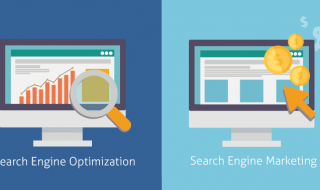
It takes a lot of courage for someone to decide to start their own business. They have made very clear they are willing to take certain risks for the opportunity to stake their claim as a successful business owner. We are pulling for people with this kind of courage to succeed at every level.
The fact you are reading this information would indicate you are contemplating starting your own small business. If that’s the case, you should know we are in the business of helping small business owners succeed. We attempt to do this by offering useful information that business owners can use to drive their business decisions.
Successful business owners understand one undeniable fact: the numbers always tell the tale. That’s exactly the reason accountants have work. Businesses need them to provide information related to the success of a particular business. It’s worth noting that several key finance formulas have great value in the eyes of investors and lenders.
With this in mind, we feel it’s useful for every small business owner to know how certain financial formulas tell a certain story about a business’s effectiveness. We would like to offer you the following information about four financial formulas you should use to direct your business activities. Note: the focus of this information will be guided towards a small business being run by a sole proprietor.
Cash Ratio Formula
In the business world, cash is a vital asset. Companies that maintain a lot of cash and cash equivalents have a lot more flexibility in the way they operate. This flexibility includes helping business owners avoid having to take on debt to run their companies.
The “cash ratio” is a quick formula business owners can use to determine how much cash leverage they have on hand at any given point in time. The number is useful in helping business owners make purchasing decisions for inventory and assets. Here’s the actual formula:
Cash Ratio = Cash ÷ Current Liabilities
In this formula, cash represents money that’s in bank accounts, plus any cash equivalents (investments) that can be converted into cash in quick order. Current liabilities represent all short term obligations with a due date of no later than 12 months.
After the calculation, a cash ratio of higher than 1.0 indicates the business has cash resources it can spend and still meet its current liabilities. If the ratio comes back less than 1.0, the company is facing a potential cash shortfall, which might require the business owner to look for borrowing resources to compensate for the potential lack of cash.
Break-even Point Formula
If a small business has limited resources, it’s incumbent on the small business owner to use available resources as efficiently as possible. Using the “break-even point” formula, the business owner should be able to figure out how many units they need to sell just to break even. Here’s the actual formula:
Break-even point = Fixed Costs ÷ (Price per unit – variable costs per unit)
In this formula, fixed costs represent expenses the business pays to keep the business running. Such expenses would include administrative salaries, rent, utilities, and insurance. Variable costs represent the amount of expenses required to produce a single unit.
If a small business owner can determine the company’s break-even point, they will then be able to forecast sales to create certain levels of profitability. They will also have a better idea about the viability of the business.
Profit Margin Formulas
The profit margin formula provides a useful barometer related to how effectively the company is turning products or services into profit. There are two primary profit margin formulas, one based on gross profits and the other based on net profits. Here’s the actual formula for the gross profit margin calculation:
Gross Profit Margin = Gross Income from sales ÷ Sales
To determine the net profit margin, the business owner would simply need to substitute gross income from sales with the company’s net profit.
In the formula, gross profit from sales would simply be the cumulative revenue generated by the sale of goods or services minus the variable costs it took to generate those sales. Obviously, the sales number is just sales revenue.
If someone is calculating the net profit margin, they would take the gross profit from sales, add other revenue (interest, sales assets, etc) and subtract other expenses like rent, utilities, depreciation, administrative salaries, and income taxes.
Profit margins are of particular interest to potential investors and lenders. These are the parties that prefer to do business with companies that have higher profit margins. They usually see this as an indication the business owner has the ability to run efficient and effective operations.
Return on Assets Formula
This particular formula is often used by small business owners who are looking to expand their operations. A business expansion usually requires cash. If a business doesn’t have cash, the next best option is borrowing. When a business owner wants to borrow, lenders like to see how well the company has used its assets in the past to generate profits. Here’s the actual formula:
Return on Assets = Net Income ÷ Average Total Assets
In this calculation, net income is the company’s bottom line. The average total assets is calculated by taking the total asset value for each month in which the net income was earned and dividing it by the total number of applicable months. It’s important to use average total assets to prevent a distortion that could be caused by assets that were bought or sold in the last month of reporting income.
If a business owner can represent a high return on assets, it gives potential lenders peace of mind. They view the high return on assets as an indication the business owner will use any new assets just as effectively and efficiently as before.
As a business owner, you need to use metrics to help guide your business decisions. Each of the above formulas tells a story about how well you and the company are performing at any given point in time.




